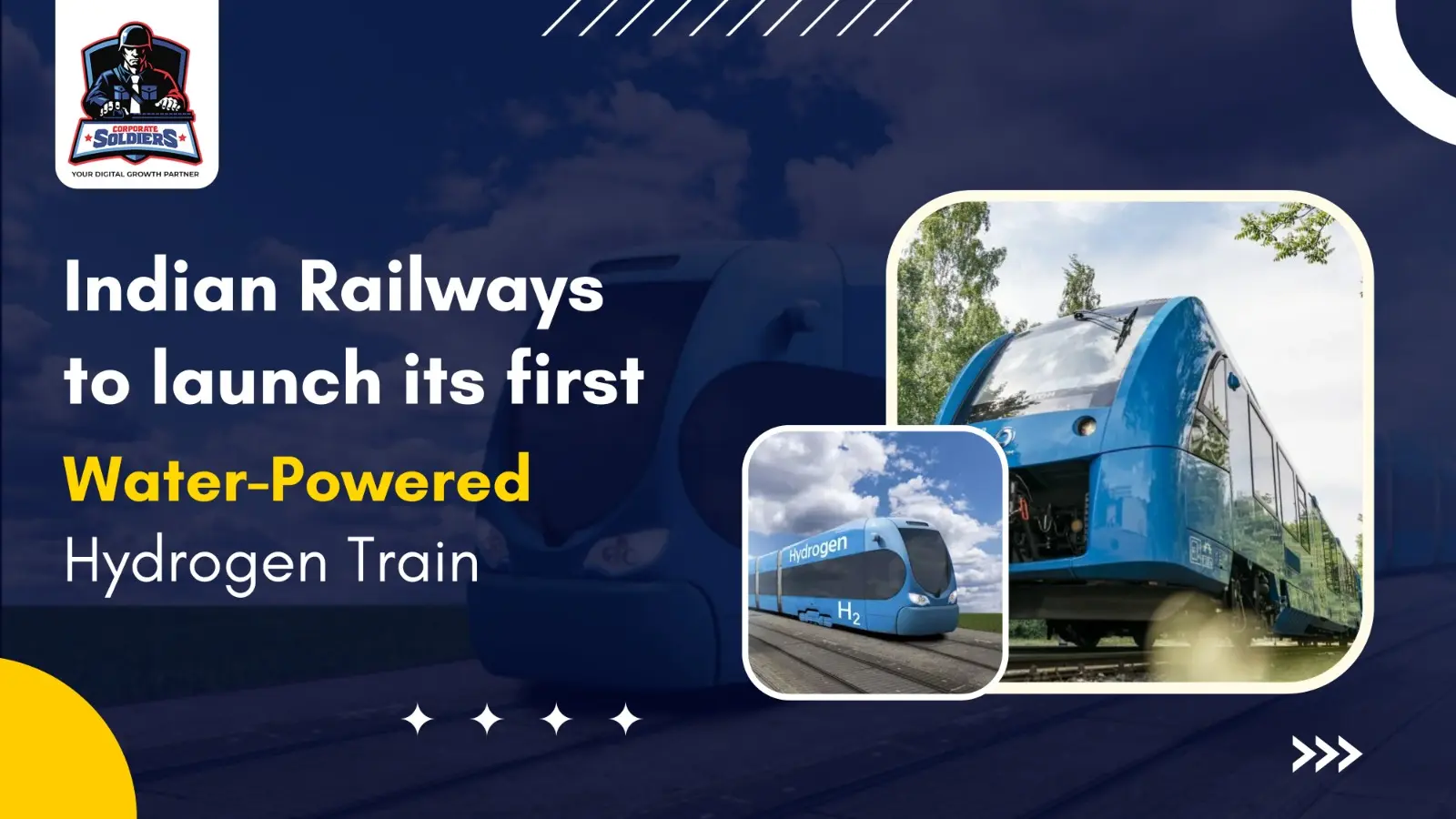One of the biggest rail systems in the world, Indian Railways, is poised to revolutionise travel by introducing a new, environmentally friendly train that runs without electricity or diesel. The next advancement in Indian rail transportation will be demonstrated by this soon-to-be “water-powered” hydrogen train.
Steam engines were used by Indian Railways at first, followed by coal and diesel engines, which are both powerful and polluting. Even though a lot of trains now run on electricity, coal is still burned to produce this power.
With the introduction of a revolutionary hydrogen-powered train, India is now ushering in a new age and reaching a significant national milestone.
The Hydrogen Train: A Game-Changer for Indian Railways
The hydrogen train runs on fuel cells, which combine hydrogen and oxygen to produce energy while only steam is released. By drastically lowering pollutants, this creative method offers a clean and sustainable substitute for trains that run on diesel. Additionally, thanks to advanced water storage technologies, it uses about 40,000 litres of water every hour.
This December, the first hydrogen train is scheduled to begin service on the Jind-Sonipat track in Haryana. Future hydrogen train services might be offered on scenic routes like the Nilgiri Mountain Railway and the Darjeeling Himalayan Railway. In addition to that, Indian Railways plans to add 35 hydrogen trains to its fleet, each costing ₹80 crore.
How Does It Function?
Fuel Cells
The fuel cell, the central part of a hydrogen train, uses an electrochemical reaction between hydrogen and oxygen to produce power. Water and electricity are produced as byproducts of the reaction between hydrogen and oxygen inside the fuel cell.
Electricity
The train’s electric motors, which turn the wheels, are powered by the electricity produced by the fuel cell. Hydrogen trains are therefore classified as electric trains that use a clean, renewable energy source.
Energy Storage
Some hydrogen trains are fitted with energy storage systems, such as batteries or supercapacitors, to capture excess electricity produced by the fuel cells. This stored energy can be utilised during periods of heightened power demand, such as during acceleration or when climbing inclines, thereby augmenting the fuel cell’s output.
Benefits of Hydrogen Trains
Eco-Friendliness
At the moment of use, trains that run on hydrogen emit no pollutants. A fuel cell, which produces power by mixing air oxygen with hydrogen stored on the train’s roof, provides the energy required for the train’s operations. Carbon dioxide is not released during this procedure.
Improved Passenger Experience
Trains that run on electricity provide a calm and cosy way to travel. Since the sole byproducts of combustion are steam and condensed water, using hydrogen guarantees a quiet and comfortable ride. This characteristic is particularly beneficial in urban environments, where noise pollution poses a significant concern.
Efficiency of Energy
Since fuel cells may outperform conventional internal combustion engines by up to three times, these trains are extremely energy efficient.
Cost Effective
Fuel cells offer a cost-efficient and low-maintenance solution. Additionally, fuel cells have a longer asset lifespan in comparison to electrification, and repairs are frequently straightforward, involving the replacement of a single plug-in component with another.
A Step Toward Sustainability
The hydrogen train represents a transformative phase for Indian Railways, emphasising the importance of sustainable energy and advanced infrastructure. By decreasing reliance on fossil fuels, India establishes a benchmark for pioneering, environmentally friendly transportation solutions.
Compared to diesel trains, hydrogen trains reduce noise pollution by 60%, making for a more peaceful riding experience. They can go up to 1,000 kilometres on a single trip and reach top speeds of 140 km/h. With a passenger capacity on par with conventional trains, this technology combines passenger comfort and sustainability.
Conclusion: A Transformative Journey Ahead
Given that each hydrogen train costs about Rs 80 crore, Indian Railways is making large investments in modernising its infrastructure, such as installing specialist refuelling stations and hydrogen storage facilities.
Reaching the net-zero carbon target by 2030 will need the increased usage of hydrogen trains, which this infrastructure is critical to facilitating.
The speed and capacity of these new trains will be comparable to those of conventional diesel trains, offering a sustainable substitute without sacrificing effectiveness.










